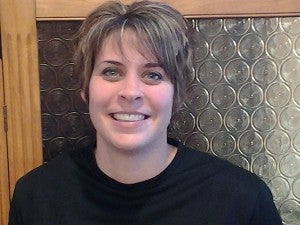4-H has youth targets and priorities
Published 9:00 am Sunday, March 22, 2015
Guest column by Megan Thorson
Recently there has been much discussion statewide about the University of Minnesota Extension Youth development’s plan, targets and program priorities. The Extension Center for Youth Development has developed a five-year strategic plan with three target areas that will track and measure to help demonstrate the impact 4-H is having in the lives of Minnesota youth. The targets were determined by looking at important areas necessary for youth to succeed. The plan will serve to improve our programmatic impact and organizational effectiveness. The plan officially began in October 2014. This first year is being spent planning so that regional teams can be engaged in rich and thorough explorations and development of strategies that will lead to success. The Youth Development Statewide program evaluation team has mapped out a plan to track and measure the three target goals.
The targets are:
• Cultural diversity. Minnesota’s population is changing. 4-H needs to reflect those changes in order to remain relevant, viable and effective in the future. As a public entity, 4-H has a responsibility to serve the diverse populations of all youth in Minnesota. We have set a five-year target that youth enrolled in 4-H will represent the racial, ethnic and socioeconomic diversity of the youth in each county. This target will require a lot of relationship building with different groups here in Freeborn County to get involved more with the different ethnic and racial groups that are represented in this county.
• Higher education. 4-H is committed to developing passion for lifelong learning in youth, providing an environment that values and supports learning, and preparing youth for higher education and careers. We have set a target goal that 70 percent of Minnesota 4-H youth will go onto post-secondary learning after high school. The 70 percent goal was formed by the U.S. matriculation rate based on Bureau of Labor and Statistics that 66 percent of high school graduates who went on to college/post-secondary education in 2012. Unfortunately, this number does not include the youth who decide to go into the military or those youth who do other trade/skilled labor education, such as a nine- or 18-month program for cosmetology or diesel mechanics program, for instance. We encourage all youth to explore their options and to make positive choices about their future.
• Twenty-first century learning skills. Minnesota 4-H has a long history of building life-skills. Trends now require more concrete evidence of 21st century skills that support success in school, college and the workplace. Those environments require young people to both have content knowledge and be able to communicate effectively, build connections, make positive choices and make contributions. We have set a target that 80 percent of youth participating in 4-H will be prepared with 21st century learning skills in communicating effectively, building connections, making positive choices and making contributions, which will help them excel in their education and in the workplace. These areas are in alignment with national work led by National 4-H Council and NIFA and are being measured in 4-H in several states. By having the 4-H’ers involved in office roles in the club and county level, interviewing at the county fair about their project areas as well as participating in other 4-H events, the 4-H’ers are gaining the skills to communicate and work effectively with others. If they are being an active participant in 4-H, they are going to build these life skills that are so important to their development.
So why should people in the community care about these targets? The University of Minnesota has done extensive research on youth development and the impact it has on the lives of our youth in our communities. We need your help to identify areas and gain ideas of how we can reach other populations and to possibly provide other educational activities to youth in other settings that we have not traditionally worked with.
If you have ideas or want more information about these targets, please call the University of Minnesota Freeborn County 4-H office at 507-377-5660.
Megan Thorson is a County 4-H program coordinator with the University of Minnesota Extension service for Freeborn County.



